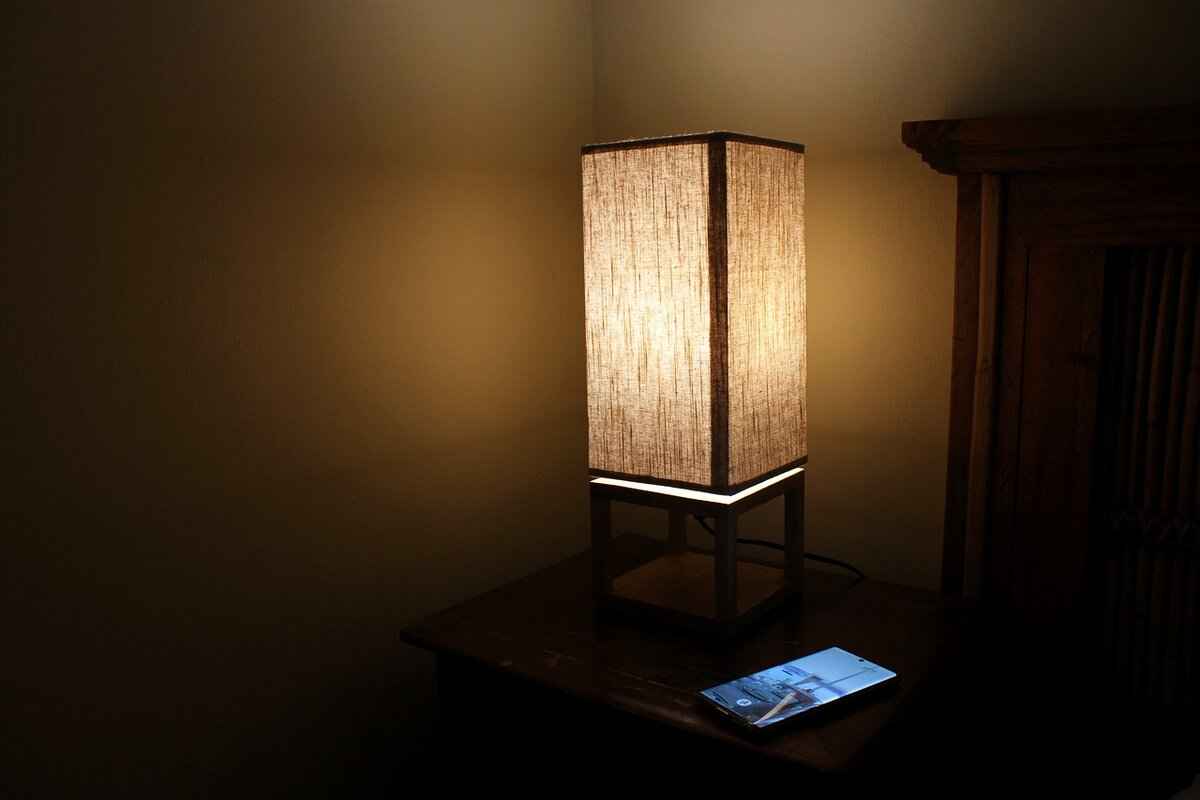This article explores effective strategies and expert insights to help parents establish better sleep routines for toddlers, ensuring they stay in bed and sleep soundly through the night.
Understanding Toddler Sleep Patterns
To effectively manage a toddler’s sleep routine, it’s essential to understand their natural sleep patterns and needs. Generally, toddlers aged 1-3 years require about 12 to 14 hours of sleep in a 24-hour period, including naps. Recognizing signs of tiredness, such as rubbing eyes or becoming cranky, can help parents determine the right time to start the bedtime routine. Additionally, understanding that toddlers experience sleep cycles differently than adults can assist in creating a conducive sleep environment. During this stage, toddlers often transition from two naps to one, which can affect their nighttime sleep. Parents should be mindful of these changes to adjust bedtimes accordingly.
Creating a Consistent Bedtime Routine
A consistent bedtime routine can significantly improve a toddler’s ability to stay in bed. This routine should ideally last 20 to 30 minutes and include calming activities such as:
- Taking a warm bath
- Reading a bedtime story
- Listening to soft music
- Engaging in quiet play
Implementing these activities helps signal to toddlers that it is time to wind down. Furthermore, parents should aim to keep the routine consistent every night, as predictability fosters a sense of security in children.
Setting a Regular Sleep Schedule
Establishing a regular sleep schedule helps signal to toddlers when it’s time to wind down and prepare for bed. It is beneficial to set a specific bedtime and wake-up time, even on weekends. This consistency helps regulate the child’s internal clock, making it easier for them to fall asleep and wake up refreshed. Parents should also consider the child’s daily activities and energy levels when determining the best sleep schedule.
Choosing the Right Bedtime
Selecting an appropriate bedtime based on your toddler’s age and daily activities is crucial. For example, if your toddler is particularly active during the day, they may require an earlier bedtime to ensure they get enough rest. Observing your child’s behavior can provide insights into their ideal bedtime. A good rule of thumb is to aim for bedtime between 7:00 PM and 8:00 PM, allowing for adequate sleep before the next day’s activities.
Incorporating Calming Activities
Including calming activities, such as reading or gentle music, can help toddlers transition smoothly into sleep mode. Activities that promote relaxation can reduce anxiety and make bedtime a pleasant experience. Parents might also consider creating a cozy sleep space with dim lighting and comfortable bedding to enhance the calming atmosphere.
Using Positive Reinforcement
Positive reinforcement techniques can motivate toddlers to stay in bed. This approach involves rewarding good behavior with praise or small rewards. For instance, parents can create a sticker chart where toddlers earn a sticker for each night they stay in bed until morning. This not only encourages good sleep habits but also builds the child’s confidence.
Establishing Reward Systems
Implementing a reward system can help toddlers associate staying in bed with positive outcomes. Rewards can range from stickers to extra storytime. The key is to ensure that the rewards are meaningful to the child, as this will enhance their motivation to follow the bedtime rules.
Offering Praise and Encouragement
Offering verbal praise and encouragement when toddlers stay in bed fosters a sense of accomplishment. Simple affirmations like “I’m so proud of you for staying in bed” can reinforce their good behavior and contribute to a positive bedtime experience.
Addressing Common Sleep Disruptions
Understanding and addressing common sleep disruptions can help parents manage nighttime awakenings. Factors such as nightmares, night terrors, and separation anxiety can significantly impact a toddler’s ability to stay asleep. Parents should be prepared to comfort their child during these instances, providing reassurance and a safe environment.
Dealing with Nightmares and Night Terrors
Nightmares and night terrors can be distressing for toddlers. Parents can help by discussing the child’s fears during the day and reassuring them that they are safe. Creating a bedtime story that includes positive themes can also help mitigate fears.
Managing Separation Anxiety
Separation anxiety is common in toddlers and can lead to difficulties at bedtime. To ease their fears, parents can practice short separations during the day to help the child become accustomed to being apart. Establishing a consistent goodbye ritual can also provide comfort, making it easier for the child to stay in bed.
When to Seek Professional Help
If sleep challenges persist, it may be necessary to seek professional guidance. Consulting with a pediatrician or sleep specialist can provide insights into underlying issues that may be affecting your toddler’s sleep. Early intervention can lead to effective solutions and better sleep for both the child and the parents.

Understanding Toddler Sleep Patterns
Understanding a toddler’s sleep patterns is crucial for parents aiming to establish a successful sleep routine. Toddlers undergo significant developmental changes that influence their sleep needs and behaviors. By recognizing these patterns, parents can create an environment conducive to better sleep.
To effectively manage a toddler’s sleep routine, it’s essential to understand their natural sleep patterns and needs, including how much sleep they require at different ages. Generally, toddlers aged 1 to 3 years need between 12 to 14 hours of sleep in a 24-hour period. This includes both nighttime sleep and daytime naps.
During this stage, toddlers often experience sleep regressions which can be triggered by various factors such as teething, illness, or developmental milestones. Recognizing these regressions can help parents adjust their expectations and routines accordingly. For example, a toddler who previously slept through the night may suddenly wake up frequently due to a new skill they are mastering, such as walking or talking.
Additionally, toddlers tend to have shorter sleep cycles than adults, which means they may wake up more frequently during the night. Understanding that this is a normal part of their development can help parents remain patient and responsive to their child’s needs.
Another key aspect of toddler sleep is the importance of naps. Most toddlers benefit from one or two naps during the day, which can help them recharge and improve nighttime sleep quality. The timing and duration of these naps can vary, but typically, a midday nap of about 1 to 3 hours is ideal.
As toddlers grow, their sleep needs will change. By around age 3, many children transition to one nap a day, and by age 5, most no longer require daytime sleep at all. Parents should be attentive to these changes and adjust bedtime schedules accordingly to ensure their toddler is getting the right amount of sleep.
Establishing a consistent bedtime routine can also play a significant role in helping toddlers understand when it’s time to sleep. This routine should be calming and predictable, allowing the child to wind down and prepare for rest. Activities such as reading a story, singing a lullaby, or dimming the lights can signal to the toddler that bedtime is approaching.
In summary, understanding toddler sleep patterns involves recognizing their sleep needs, developmental changes, and the importance of a consistent bedtime routine. By being mindful of these factors, parents can create an environment that supports healthy sleep habits, ultimately leading to more restful nights for both toddlers and their caregivers.

Creating a Consistent Bedtime Routine
Creating a consistent bedtime routine is essential for toddlers, as it not only helps them feel secure but also significantly enhances their ability to stay in bed throughout the night. Establishing a predictable sequence of activities before sleep can greatly improve sleep quality and reduce bedtime struggles.
A well-structured bedtime routine signals to toddlers that it is time to wind down and prepare for sleep. This routine can help them transition from the excitement of the day to a more relaxed state, making it easier for them to fall asleep and stay in bed. According to pediatric sleep experts, children thrive on consistency, and a routine can provide them with a sense of security and predictability.
- Timing: Aim to start the bedtime routine at the same time each night. This helps regulate your toddler’s internal clock.
- Calming Activities: Incorporate soothing activities such as reading a story, taking a warm bath, or listening to soft music. These activities can help calm the mind and prepare the body for sleep.
- Consistent Sequence: Establish a sequence of activities that you follow every night. For example, you might start with a bath, followed by storytime, and then tucking them into bed.
To successfully implement a bedtime routine, it is crucial to be patient and consistent. Here are some practical tips:
- Involve Your Toddler: Allow your child to participate in choosing some of the activities for the routine. This can make them more enthusiastic about bedtime.
- Set Clear Expectations: Explain to your toddler what will happen during the bedtime routine. Use simple language and be clear about the sequence of events.
- Stay Calm and Positive: Your attitude can influence how your toddler feels about bedtime. Maintain a calm demeanor and offer positive reinforcement throughout the routine.
As your toddler grows and their sleep needs change, be prepared to adjust the routine accordingly. Pay attention to signs of readiness for changes, such as your child resisting certain activities or becoming more independent. Flexibility is key to maintaining a positive bedtime experience.
In summary, a consistent bedtime routine can significantly enhance a toddler’s ability to stay in bed and sleep soundly. By incorporating calming activities, maintaining a regular schedule, and being patient during the implementation process, parents can create a nurturing environment that fosters healthy sleep habits. This not only benefits the child but also promotes a more peaceful nighttime experience for the entire family.
Setting a Regular Sleep Schedule
Establishing a regular sleep schedule is crucial for toddlers, as it plays a significant role in promoting better sleep habits. By signaling to children when it’s time to wind down, parents can create an environment conducive to restful sleep. This section delves into the importance of a consistent sleep schedule, offering practical tips and insights for parents.
Why is a Sleep Schedule Important?
Children thrive on routine, and a regular sleep schedule helps them understand what to expect as bedtime approaches. Consistency in sleep times reinforces the body’s natural circadian rhythms, making it easier for toddlers to fall asleep and stay asleep. When toddlers know that bedtime is at a specific time each night, they are less likely to resist going to bed.
How to Establish a Regular Sleep Schedule
- Determine Optimal Sleep Needs: Toddlers typically require between 11 to 14 hours of sleep per day, including naps. Assess your child’s specific needs based on their age and energy levels.
- Set a Fixed Bedtime: Choose a bedtime that allows for the required amount of sleep and stick to it, even on weekends. This helps reinforce the sleep routine.
- Create a Pre-Bedtime Ritual: Engage in calming activities such as reading a book or taking a warm bath to signal that it’s time to wind down. This prepares toddlers both mentally and physically for sleep.
Benefits of a Regular Sleep Schedule
Implementing a consistent sleep schedule can lead to numerous benefits for toddlers, including:
- Improved Mood: Well-rested toddlers are generally happier and more manageable during the day.
- Enhanced Cognitive Function: Adequate sleep contributes to better memory and learning capabilities.
- Healthier Sleep Patterns: A regular schedule can help prevent sleep disorders and promote overall well-being.
Tips for Maintaining Consistency
While establishing a sleep schedule is essential, maintaining it can be challenging. Here are some tips to help:
- Limit Screen Time: Reduce exposure to screens at least an hour before bedtime, as blue light can interfere with melatonin production.
- Be Patient: It may take time for toddlers to adjust to a new schedule. Consistency and patience are key.
- Monitor Naps: Ensure that daytime naps do not interfere with nighttime sleep. Adjust nap times as necessary to maintain the overall sleep schedule.
In conclusion, setting a regular sleep schedule is a fundamental aspect of promoting healthy sleep habits in toddlers. By understanding their sleep needs and implementing a consistent routine, parents can help their children wind down effectively and enjoy restful nights.
Choosing the Right Bedtime
for your toddler is a critical aspect of establishing healthy sleep patterns. As parents, understanding the importance of aligning bedtime with your child’s age and daily activities can significantly impact their overall well-being and behavior. Toddlers typically need between 11 to 14 hours of sleep per day, including naps, and selecting an appropriate bedtime helps ensure they receive the necessary rest.
When determining the best bedtime, consider your toddler’s age and their individual sleep needs. For instance, younger toddlers may require earlier bedtimes, while older toddlers might be able to stay up a bit later. A good rule of thumb is to aim for a bedtime that allows for sufficient sleep before they wake up in the morning. For example, if your toddler needs to wake up by 7 AM, a bedtime between 7 PM and 8 PM is usually ideal.
In addition to age, it’s essential to take into account your toddler’s daily activities. If they have had a particularly active day filled with play and exploration, they may need an earlier bedtime to recover from their exertions. Conversely, if the day has been relatively calm, they might be able to handle a slightly later bedtime. This flexibility helps in creating a sleep schedule that is tailored to their specific needs.
To make bedtime more effective, establish a consistent routine that signals to your toddler that it’s time to wind down. This could include activities such as taking a warm bath, reading a bedtime story, or listening to soft music. These calming activities not only help to prepare your toddler for sleep but also reinforce the concept of bedtime as a comforting and enjoyable experience.
It’s also essential to recognize the signs of tiredness in your toddler. Rubbing their eyes, becoming fussy, or losing interest in activities are all indicators that they may be ready for bed. Responding to these cues promptly can help prevent overtiredness, which can make falling asleep more challenging.
In summary, involves a combination of understanding your toddler’s age, daily activities, and sleep cues. By creating a consistent bedtime routine and being responsive to their needs, you can foster better sleep habits that will benefit both your toddler and your family as a whole. Remember, a well-rested toddler is often a happier and more manageable child, making bedtime an essential aspect of parenting.
Incorporating Calming Activities
Establishing a peaceful bedtime routine is crucial for toddlers as it helps them transition into sleep mode smoothly. One effective strategy is that promote relaxation and comfort. These activities can significantly enhance the bedtime experience, making it easier for toddlers to stay in bed throughout the night.
To begin with, reading is one of the most effective calming activities. Choosing a few short, gentle stories can help create a cozy atmosphere. The rhythm of a parent’s voice combined with the soothing imagery of picture books can captivate a toddler’s attention while simultaneously signaling that it’s time to wind down. Parents can also opt for stories that convey messages of comfort and security, which can further ease any anxieties a child may have about bedtime.
Another excellent calming activity is playing gentle music. Soft, melodic tunes can serve as a backdrop to the bedtime routine, helping to create a tranquil environment. Consider using lullabies or instrumental music specifically designed for relaxation. This not only helps to lower heart rates but also encourages a sense of safety and calmness, making it easier for toddlers to drift off to sleep.
In addition to reading and music, incorporating mindful breathing exercises can be beneficial. Teaching toddlers simple breathing techniques, such as taking deep breaths while counting to three, can help them learn to self-soothe. This practice not only calms them but also instills a sense of control over their emotions, which is particularly useful if they experience any bedtime fears.
Creating a visual bedtime chart can also aid in calming a toddler’s mind. This chart can outline the bedtime routine in a fun and engaging way, allowing children to see what activities are next. Knowing what to expect can alleviate anxiety and make them feel more secure in their routine. Additionally, using stickers or drawings can serve as a reward system, further motivating them to engage with the routine positively.
Finally, consider incorporating gentle stretching or yoga into the pre-sleep routine. Simple stretches can help release any pent-up energy and tension from the day, promoting relaxation. There are many resources available for toddler-friendly yoga sessions, which can be both fun and beneficial for their physical and emotional well-being.
In summary, incorporating calming activities such as reading, gentle music, mindful breathing, visual charts, and gentle stretching can significantly enhance a toddler’s bedtime experience. These practices not only help in transitioning them into sleep mode but also foster a sense of security and comfort, making it easier for them to remain in bed throughout the night.
Creating a Comfortable Sleep Environment
is essential for fostering a peaceful atmosphere that promotes better sleep for toddlers. A well-designed sleep space not only enhances comfort but also plays a crucial role in helping children feel secure and relaxed at bedtime. This sense of security can significantly encourage toddlers to stay in bed throughout the night, reducing the likelihood of nighttime awakenings.
First and foremost, the temperature of the room should be conducive to sleep. Ideally, a toddler’s bedroom should be kept between 68°F and 72°F (20°C to 22°C). This temperature range is considered optimal for sleep, as it helps regulate body temperature and prevents overheating. Parents can use a fan or air conditioning in warmer months and cozy blankets in colder months to achieve this balance.
Next, consider the lighting in the room. A dark environment signals to the brain that it is time to sleep. Using blackout curtains can effectively block out any external light sources that might disrupt sleep. Additionally, a small nightlight with soft, warm tones can provide a sense of comfort without being overly stimulating.
Another critical aspect of a comfortable sleep environment is the bedding. Investing in a high-quality mattress and soft, breathable sheets can make a significant difference in your toddler’s sleep quality. Ensure that the bed is appropriately sized for your child, as a crib or toddler bed that is too small can be uncomfortable. Furthermore, using familiar blankets or stuffed animals can provide a sense of security, making it easier for toddlers to settle down.
To enhance the ambiance, consider incorporating soothing sounds. White noise machines or soft lullabies can create a calming atmosphere that masks disruptive noises from outside. This auditory comfort can help toddlers drift off to sleep more easily and stay asleep longer.
Lastly, it’s essential to keep the room clutter-free and organized. A tidy space can promote relaxation and a sense of order. Encourage your toddler to help with this process, as it can instill a sense of responsibility and ownership over their sleep environment.
In summary, creating a comfortable sleep environment involves several key elements: maintaining an optimal temperature, controlling lighting, selecting appropriate bedding, incorporating soothing sounds, and keeping the space organized. By focusing on these aspects, parents can help their toddlers feel more secure and relaxed at bedtime, ultimately encouraging them to stay in bed throughout the night.

Using Positive Reinforcement
Positive reinforcement is a powerful tool for parents aiming to encourage their toddlers to stay in bed throughout the night. By implementing various techniques, parents can create a supportive environment that fosters good sleep habits. Here, we explore effective methods that utilize positive reinforcement to motivate toddlers.
- Establishing Reward Systems
Implementing a reward system can significantly enhance a toddler’s motivation to stay in bed. This involves creating a simple chart where toddlers can earn stickers or stars for each night they remain in bed. Once they accumulate a certain number, they can receive a small reward, such as a new bedtime story or a special outing. This not only makes bedtime a more positive experience but also helps toddlers associate staying in bed with positive outcomes.
- Offering Praise and Encouragement
Verbal praise is another effective form of positive reinforcement. When a toddler stays in bed, parents should enthusiastically acknowledge their behavior with phrases like, “I’m so proud of you for staying in bed!” This simple act of recognition builds a toddler’s self-esteem and encourages them to repeat the behavior. Additionally, parents can incorporate a bedtime ritual that includes a moment of praise, reinforcing the idea that staying in bed is a desirable action.
- Creating a Visual Sleep Chart
A visual sleep chart can be an engaging way for toddlers to track their progress. Parents can design a colorful chart that highlights each night the child stays in bed. This visual representation serves as a constant reminder of their achievements and motivates them to continue the positive behavior. The act of coloring in a star or adding a sticker can be exciting for toddlers, making bedtime feel like a fun challenge.
- Using Transitional Objects
Transitional objects, such as a favorite stuffed animal or blanket, can provide comfort and security for toddlers at bedtime. By allowing them to choose a special item to sleep with, parents can help their child feel more at ease in their bed. This sense of security can lead to a greater willingness to stay in bed, as the toddler associates their special object with feelings of safety and comfort.
- Implementing Bedtime Stories
Incorporating bedtime stories into the routine can also serve as a form of positive reinforcement. Parents can read stories that emphasize the importance of sleep and staying in bed, helping toddlers understand the benefits of good sleep habits. Engaging narratives can capture their attention and make them more inclined to stay in bed, as they look forward to the next installment of their favorite story.
- Setting Up a “Sleep Countdown”
Another effective technique is the “sleep countdown.” Parents can use a timer to signal when it’s time to wind down. As the timer counts down, they can engage in calming activities together, such as reading or gentle stretching. This not only prepares the toddler for sleep but also reinforces the idea that staying in bed is part of a fun, structured routine.
By utilizing these positive reinforcement techniques, parents can create a nurturing environment that encourages toddlers to stay in bed. These methods not only improve sleep habits but also strengthen the parent-child bond, making bedtime a more enjoyable experience for everyone involved.
Establishing Reward Systems
Implementing a reward system is a powerful strategy that can significantly influence a toddler’s bedtime behavior. By associating staying in bed with positive outcomes, parents can reinforce desirable actions and create a more peaceful bedtime environment. This approach not only encourages toddlers to remain in bed but also fosters a sense of responsibility and accomplishment.
- Understanding the Concept of Rewards: Rewards can take various forms, such as stickers, small toys, or extra storytime. The key is to choose rewards that are meaningful to your child. For instance, if your toddler loves stickers, a sticker chart can be an effective tool. Each night they stay in bed, they earn a sticker, and after collecting a certain number, they can choose a special reward.
- Setting Clear Expectations: Before implementing a reward system, it’s crucial to communicate the rules clearly. Explain to your toddler what behavior is expected—staying in bed all night—and what rewards they can earn. Use simple language and perhaps even role-play to help them understand.
- Consistency is Key: Consistency is vital for the success of any reward system. Ensure that the rules are applied every night. If your child gets out of bed, gently remind them of the expectations and encourage them to return to bed. Over time, they will begin to associate staying in bed with receiving rewards.
- Gradual Progression: Start with small, achievable goals. For example, if your toddler typically gets out of bed multiple times, aim for one night of staying in bed before gradually increasing the expectation. This gradual approach helps build their confidence and reinforces positive behavior.
- Incorporating Praise: Alongside tangible rewards, verbal praise is equally important. Celebrate your toddler’s successes, no matter how small. A simple, “I’m so proud of you for staying in bed tonight!” can boost their self-esteem and motivate them to repeat the behavior.
It’s also important to be mindful of the potential downsides. Over-reliance on rewards can lead to a sense of entitlement, where toddlers expect a reward for every good behavior. Therefore, it’s wise to balance the reward system with intrinsic motivation. Encourage your child to appreciate the value of a good night’s sleep and the comfort of their bed.
In summary, establishing a reward system for staying in bed can transform bedtime from a struggle into a positive experience. By understanding your toddler’s motivations, setting clear expectations, and maintaining consistency, you can create an effective system that not only encourages good sleep habits but also strengthens the parent-child bond through shared achievements. With time, patience, and the right approach, you can help your toddler develop a healthy relationship with bedtime that will benefit them for years to come.
Offering Praise and Encouragement
How to Keep a Toddler in Bed: Tips for Better Sleep RoutinesThis article explores effective strategies and expert insights to help parents establish better sleep routines for toddlers, ensuring they stay in bed and sleep soundly through the night.
To effectively manage a toddler’s sleep routine, it’s essential to understand their natural sleep patterns and needs, including how much sleep they require at different ages.
A consistent bedtime routine can significantly improve a toddler’s ability to stay in bed. This section discusses the elements of an effective routine and how to implement it.
Establishing a regular sleep schedule helps signal to toddlers when it’s time to wind down and prepare for bed, promoting better sleep habits.
Selecting an appropriate bedtime based on your toddler’s age and daily activities is crucial for ensuring they get enough rest while also making it easier for them to stay in bed.
Including calming activities, such as reading or gentle music, can help toddlers transition smoothly into sleep mode, making it easier for them to remain in bed.
A comfortable sleep environment is key to helping toddlers feel secure and relaxed at bedtime, which can encourage them to stay in bed throughout the night.
Positive reinforcement techniques can motivate toddlers to stay in bed. This section covers various methods parents can use to encourage good sleep behavior.
Implementing a reward system can help toddlers associate staying in bed with positive outcomes, reinforcing their good behavior and making bedtime less of a struggle.
Offering verbal praise and encouragement when toddlers stay in bed fosters a sense of accomplishment and can lead to improved sleep habits over time. When parents express enthusiasm about their child’s ability to stay in bed, it creates a positive feedback loop. This recognition not only boosts the child’s self-esteem but also reinforces the behavior they are being praised for.
For instance, when a toddler successfully stays in bed throughout the night, a simple phrase like, “I am so proud of you for staying in bed!” can make a significant impact. This type of encouragement helps children understand that their actions are valued and appreciated. The more frequently they receive such affirmations, the more likely they are to repeat the desired behavior.
Incorporating a system where children can earn stickers or other small rewards for consistent bedtime behavior can also be effective. This tangible form of recognition, combined with verbal praise, can create a powerful motivational strategy. Parents might say, “Look at all the stickers you’ve earned for staying in bed! You’re doing such a great job!” This not only encourages the child but also makes bedtime feel like a fun and rewarding experience.
Moreover, it is essential for parents to be consistent with their praise. Consistency helps toddlers understand that staying in bed is a behavior that is always appreciated, not just occasionally. This predictable reinforcement can lead to a more stable sleep routine.
Additionally, parents should be mindful of their tone and body language when offering praise. A warm, enthusiastic tone and positive facial expressions can enhance the impact of the words. This emotional connection can make the praise feel more genuine and meaningful, further encouraging toddlers to embrace their bedtime routine.
Understanding and addressing common sleep disruptions can help parents manage nighttime awakenings and ensure their toddlers remain in bed.
Nightmares and night terrors can be distressing for toddlers. This section provides strategies for comforting children and helping them feel secure during these episodes.
Separation anxiety is common in toddlers and can lead to difficulties at bedtime. Here, we explore techniques to ease their fears and encourage them to stay in bed.
If sleep challenges persist, it may be necessary to seek professional guidance. This section discusses when and how to consult a pediatrician or sleep specialist for further assistance.

Addressing Common Sleep Disruptions
Understanding and addressing common sleep disruptions is crucial for parents who want to manage nighttime awakenings effectively. Toddlers often experience various sleep disturbances that can lead to frequent awakenings and difficulty staying in bed. By identifying these issues and implementing appropriate strategies, parents can help their little ones achieve a more restful night’s sleep.
Nighttime awakenings in toddlers can occur for several reasons, including developmental milestones, changes in routine, or environmental factors. It’s essential for parents to recognize that these awakenings are often a normal part of a toddler’s sleep development. However, consistent disruptions can lead to sleep deprivation for both the child and the parents.
Nightmares and night terrors are common occurrences in young children, often leading to distress during the night. Nightmares typically happen during REM sleep and can cause the child to wake up feeling scared and anxious. On the other hand, night terrors occur during deep sleep and may result in the child appearing awake but not being responsive.
- Comfort and Reassurance: When a toddler experiences a nightmare, it’s important to provide comfort. Calmly reassure them that they are safe and encourage them to talk about their fears.
- Consistent Sleep Environment: Creating a familiar sleep environment can help reduce the frequency of nightmares. Consider using nightlights or comforting objects like stuffed animals.
- Establishing a Wind-Down Routine: A calming pre-sleep routine can help minimize anxiety and promote relaxation before bedtime.
Separation anxiety is another common issue that can disrupt sleep. Toddlers often feel anxious when separated from their parents, especially at bedtime. This anxiety can lead to tantrums or requests to leave their bed.
- Gradual Transition: To help ease separation anxiety, consider a gradual approach to bedtime. Start by sitting with your child until they fall asleep, then slowly decrease your presence over time.
- Comfort Items: Allow your toddler to have a special blanket or toy that provides comfort when they feel anxious.
- Positive Reinforcement: Praise your child for staying in bed and being brave when you leave the room. Positive reinforcement can help build their confidence.
Other factors that may lead to sleep disruptions include:
- Illness: Coughing, fever, or other illnesses can affect a child’s ability to sleep soundly. Monitoring their health and seeking medical advice when necessary can help.
- Environmental Factors: Noise, temperature, and light can all impact sleep quality. Ensure the sleep environment is conducive to rest by minimizing disturbances.
- Overstimulation: Too much screen time or active play close to bedtime can lead to difficulty winding down. Establishing a calming pre-sleep routine can counteract this.
By recognizing and addressing these common sleep disruptions, parents can create a more peaceful nighttime experience for their toddlers. Implementing strategies to manage nightmares, separation anxiety, and other factors can significantly improve sleep quality and help children feel more secure in their sleep environment.
Dealing with Nightmares and Night Terrors
Nightmares and night terrors are common experiences for toddlers, often leading to significant distress for both the child and the parents. Understanding these phenomena is crucial for effective management. Nightmares typically occur during REM sleep and are often remembered by the child, while night terrors happen during deep sleep and are usually not recalled. Both can disrupt a toddler’s sleep and create anxiety around bedtime.
To effectively address these nighttime disturbances, it’s essential to create a safe and comforting environment. Here are some strategies that can help:
- Establish a Calming Bedtime Routine: A predictable and soothing bedtime routine can help your toddler feel secure. Activities such as reading a favorite story, singing lullabies, or practicing deep breathing exercises can ease their transition to sleep.
- Provide Reassurance: If your child wakes up frightened, respond with calm reassurance. Let them know that they are safe and that nightmares are not real. A gentle hug or a few comforting words can go a long way in alleviating their fears.
- Use a Night Light: A dim night light can help reduce fear of the dark, making your toddler feel more secure. Allowing them to choose a night light can give them a sense of control over their environment.
- Encourage Expression: Encourage your child to talk about their fears or the content of their nightmares. This can help them process their feelings and reduce anxiety. You might even consider drawing a picture of the nightmare together, which can help externalize their fears.
- Limit Exposure to Scary Content: Be mindful of the media your toddler consumes. Scary stories, movies, or even certain games can trigger nightmares. Opt for age-appropriate content that promotes positivity and comfort.
- Teach Coping Strategies: Equip your child with coping techniques to handle their fears. Simple strategies like imagining a “happy place” or using a “worry doll” can empower them to manage their anxiety independently.
In some cases, persistent nightmares or night terrors may indicate underlying issues, such as stress or anxiety. If these episodes become frequent or severe, it might be beneficial to consult a pediatrician or a child psychologist. They can help identify any contributing factors and provide additional support.
By implementing these strategies, parents can help their toddlers navigate the challenges of nightmares and night terrors, fostering a sense of security and calm that promotes better sleep. Remember, patience and understanding are key as your child learns to cope with these nighttime fears.
Managing Separation Anxiety
Separation anxiety is a prevalent issue among toddlers, particularly at bedtime. It can manifest as crying, clinging, or even tantrums when parents attempt to leave the room. Understanding this behavior is crucial for parents who want to help their children feel more secure and confident during bedtime. Here, we delve into effective strategies to manage separation anxiety, ensuring both toddlers and parents can enjoy a peaceful night’s sleep.
- Recognizing the Signs of Separation Anxiety: It’s essential for parents to be aware of the signs of separation anxiety. Common indicators include excessive crying, fear of being alone, and reluctance to go to bed. Recognizing these symptoms can help parents respond appropriately.
- Establishing a Calm and Reassuring Environment: Creating a soothing bedtime atmosphere can significantly reduce anxiety. Dim lighting, a comfortable room temperature, and soft bedding can help toddlers feel secure. Additionally, using a nightlight or a favorite stuffed animal can provide comfort.
- Gradual Separation Techniques: Instead of abruptly leaving the room, parents can use gradual separation techniques. Start by sitting in the room until the child falls asleep, then slowly move further away each night. This gradual approach can help the child adjust to being alone.
- Consistent Goodbyes: Establishing a consistent goodbye routine can help ease anxiety. This may include a special phrase or a short ritual that signals it’s time to sleep. Consistency helps toddlers understand that goodbyes are temporary.
- Encouraging Independence: Promoting independence during the day can help toddlers feel more secure at night. Encourage them to play alone or engage in activities without parental supervision. This can build their confidence and reduce anxiety.
- Using Positive Reinforcement: Celebrate small victories when your child stays in bed. Positive reinforcement, such as praise or a sticker chart, can motivate toddlers to overcome their fears. This approach fosters a sense of achievement and encourages them to stay in bed.
- Practicing Relaxation Techniques: Teaching your child simple relaxation techniques, such as deep breathing or visualization, can help them calm down at bedtime. Encourage them to imagine a happy place or take slow, deep breaths to ease their anxiety.
In summary, managing separation anxiety at bedtime requires patience and understanding. By recognizing the signs, creating a comforting environment, and employing gradual separation techniques, parents can help their toddlers feel more secure. Consistent routines and positive reinforcement further support their emotional well-being, making bedtime a more enjoyable experience for everyone involved.

When to Seek Professional Help
If your toddler’s sleep challenges persist despite your best efforts, it may be time to consider seeking professional guidance. Understanding when to reach out for help can be crucial in ensuring your child gets the restful sleep they need. This section will provide insights into the signs that indicate a need for professional intervention and the steps to take when consulting a pediatrician or sleep specialist.
- Recognizing Persistent Sleep Issues: It’s essential to identify the signs that suggest your toddler may need professional help. If your child consistently struggles to fall asleep, wakes frequently during the night, or has difficulty staying in bed, these could be indicators of underlying sleep disorders. Additionally, if your toddler experiences extreme anxiety about bedtime, it might warrant further investigation.
- Understanding the Impact of Sleep Deprivation: Sleep deprivation can have significant effects on a toddler’s mood, behavior, and overall development. If you notice that your child is increasingly irritable, has difficulty concentrating, or exhibits behavioral issues during the day, it may be time to consult a professional. These symptoms can be exacerbated by poor sleep quality and may require expert evaluation.
- Consulting a Pediatrician: The first step in seeking help is often to consult your child’s pediatrician. They can provide valuable insights into your child’s sleep patterns and rule out any medical issues that may be contributing to sleep disturbances. Your pediatrician may also offer recommendations for sleep strategies tailored to your child’s specific needs.
- Exploring Sleep Specialists: If your pediatrician determines that further evaluation is necessary, they may refer you to a sleep specialist. Sleep specialists are trained to diagnose and treat various sleep disorders, such as insomnia, sleep apnea, or restless leg syndrome. They may conduct sleep studies or assessments to gain a deeper understanding of your child’s sleep issues.
- Involving a Child Psychologist: In cases where anxiety or emotional factors contribute to sleep problems, a child psychologist may be beneficial. These professionals can provide strategies to help your toddler cope with fears and anxieties related to sleep, making bedtime a more positive experience.
- Creating a Collaborative Approach: Once you’ve sought professional help, it’s essential to work collaboratively with your child’s healthcare providers. Implementing their recommendations consistently can lead to improved sleep outcomes. Keeping a sleep diary may also help track progress and identify patterns that can inform future consultations.
In summary, recognizing when to seek professional help for your toddler’s sleep challenges is crucial for their well-being. By understanding the signs of persistent sleep issues and taking proactive steps to consult with healthcare professionals, you can create a supportive environment that promotes better sleep for your child. Remember, seeking help is a positive step towards ensuring your toddler can enjoy restful nights and healthy development.
Frequently Asked Questions
- How much sleep does my toddler need?
Typically, toddlers aged 1-3 years need about 12-14 hours of sleep in a 24-hour period, including naps. Every child is different, so it’s essential to observe your toddler’s mood and energy levels to determine their specific needs.
- What should I include in a bedtime routine?
A bedtime routine can include calming activities like reading a story, taking a warm bath, or listening to soft music. The key is to keep it consistent and soothing to help your toddler wind down.
- How can I manage my toddler’s separation anxiety at bedtime?
To ease separation anxiety, try comforting your toddler with a favorite stuffed animal or blanket. You can also establish a short goodbye ritual to reassure them that you will return after a brief moment.
- What should I do if my toddler has nightmares?
Comfort your child by talking about their dreams during the day and reassuring them that they are safe. Encourage them to express their feelings and help them feel secure with a nightlight or their favorite toy.
- When should I seek professional help for sleep issues?
If your toddler’s sleep challenges persist despite your efforts, it might be time to consult a pediatrician or sleep specialist. They can provide tailored advice and rule out any underlying issues that may be affecting sleep.














